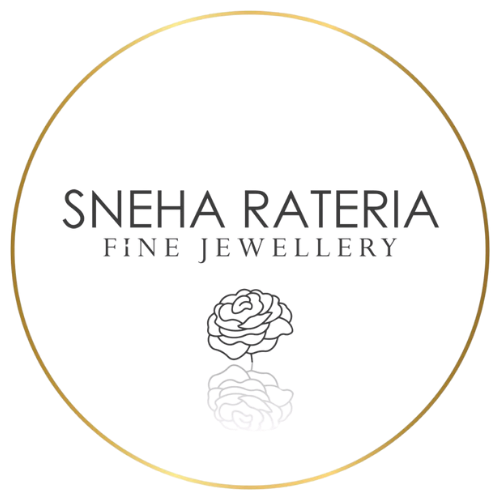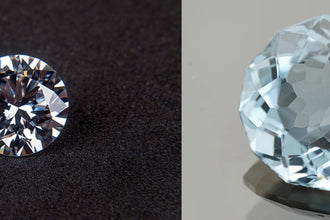
Rhinestones have captured the hearts of fashion enthusiasts and crafters alike with their dazzling sparkle and versatility. These decorative stones are a popular choice for adding glamour to jewelry, clothing, and various crafts. In this blog, we will explore the different types of rhinestones, compare them to cubic zirconia, and delve into some fascinating facts about these glittering gems. Join us as we uncover what makes rhinestones a favorite in the world of fashion and design.
What are Rhinestones?
Rhinestones are sparkling, decorative stones that are often used in jewelry, clothing, and crafts. They can mimic the look of real diamonds and other precious gems, but they are usually made from glass, crystal, or acrylic.
Types of Rhinestones
1. Glass Rhinestones: These are made from glass and are often more reflective and shiny. They are popular for high-quality jewelry and fashion items.
2. Acrylic Rhinestones: Made from plastic, these are lighter and less expensive than glass rhinestones. They are often used in crafts and casual fashion.
3. Crystal Rhinestones: These are made from lead glass and have a high level of brilliance and clarity. They are commonly used in high-end jewelry.
What is Cubic Zirconia?
Cubic zirconia, often abbreviated as CZ, is a synthetic gemstone made from zirconium dioxide. It was first developed in the 1970s in the Soviet Union and has since become a popular alternative to diamonds due to its diamond-like appearance and lower cost.
What's the Difference Between Rhinestones vs Cubic Zirconia?
The main differences between rhinestones and cubic zirconia (CZ) are:
Origins
- Rhinestones: Originally named after the Rhine River in Europe, where crystals were found. Today, they are often produced in factories and can be made from various materials, including acrylic and glass.
- CZ: Developed in the 1970s as a diamond substitute. It is created in labs, ensuring consistent quality and appearance.
Material
- Rhinestones: Made from glass or plastic coated with a reflective backing.
- CZ: A synthetic gemstone made from zirconium oxide, designed to resemble diamonds.
Appearance
- Rhinestones: Have a glittery, sparkling look due to the metallic or colored backing, but lack the clarity and brilliance of CZ.
- Cubic Zirconia: Closely resembles the look of a diamond, with a clear, colorless appearance and high sparkle.
Durability
- Rhinestones: Less durable, made from softer materials like glass or plastic, and are more prone to scratches and chips.
- CZ: Harder, more durable, and resistant to damage, making it a better choice for long-lasting jewelry.
Cost
- Rhinestones: Generally more affordable and inexpensive to produce, making them popular for costume jewelry and budget-friendly
options.
- CZ: Considered a higher-quality and more expensive option compared to rhinestones, but still more affordable than diamonds.
In summary, while both rhinestones and CZ are used as diamond alternatives, CZ is a synthetic gemstone that more closely resembles diamonds in appearance and durability, but at a higher cost compared to the glass or plastic rhinestones.
Facts About Rhinestones
Rhinestones are popular decorative gems known for their sparkle and affordability. Here are five interesting facts about them:
1. Material Composition: Rhinestones are primarily made from cut quartz crystals, but they can also be crafted from glass or acrylic. This variety allows for different qualities and price ranges, with high-quality rhinestones often being more expensive due to their manufacturing process.
2. Origin of the Name: The name "rhinestone" comes from the Rhine River in Germany, where the first rhinestones were made from rock crystals found in the river. The modern versions, however, are mostly made from glass or synthetic materials.
3. AB Coating: Some rhinestones have a special coating called "Aurora Borealis" (AB), which was developed by Swarovski in 1955. This coating gives the stones a unique iridescent quality, resembling the colors of the Northern Lights, and enhances their sparkle.
4. Durability Issues: Rhinestones can sometimes turn black or yellow over time. Blackening usually occurs when moisture gets trapped behind the foil backing, while yellowing is often due to the resin used in lower-quality rhinestones. Proper storage can help maintain their appearance.
5. Cultural Impact: Rhinestones became especially popular in the 1920s, particularly in fashion and music. They are commonly associated with country music stars and flamboyant costumes, such as those designed by Nudie Cohn, who created iconic rhinestone-studded suits.
These facts highlight the charm and versatility of rhinestones, making them a favorite choice for jewelry, clothing, and various crafts.
Why Are Rhinestones Popular?
Rhinestones are popular because they are affordable, versatile, and can make anything look more glamorous. They are often used in fashion shows, performances, and special events to catch the light and draw attention.
Conclusion
Rhinestones are a beloved choice for anyone looking to add a touch of glamour without breaking the bank. Their variety in materials and styles allows for endless creativity in fashion and crafts. While they may not have the same durability or brilliance as cubic zirconia, their affordability and eye-catching sparkle make them a favorite among many. Whether you're dressing up for a special occasion or adding flair to everyday items, rhinestones are sure to shine bright and enhance your style.
FAQs
1. What are rhinestones made of?
Rhinestones can be made from glass, crystal, or acrylic. Glass rhinestones are the most common and are made from lead glass, while crystal rhinestones are made from a higher quality material.
2. Which is more expensive, rhinestones or cubic zirconia?
Cubic zirconia is generally more expensive than rhinestones due to its higher quality and durability.
3. How are rhinestones set in jewelry?
Rhinestones are typically set using glue, while cubic zirconia is usually set with prongs or bezel settings, similar to diamonds.
4. Can rhinestones be used in fine jewelry?
Rhinestones are mainly used in costume jewelry, whereas cubic zirconia is often used in fine jewelry as a diamond alternative.
5. How do I store rhinestones?
Store rhinestones in a cool, dry place, preferably in a container with compartments to prevent scratching and tangling.
6. Do rhinestones have any value?
Rhinestones have some value but are significantly less valuable than diamonds and cubic zirconia, as they are primarily used for decorative purposes.
7. Are rhinestones and cubic zirconia suitable for everyday wear?
Cubic zirconia is more durable for everyday wear, while rhinestones are better suited for occasional use or decorative purposes.
8. Can rhinestones and cubic zirconia be resized or repaired?
Rhinestones are generally not resizable, but cubic zirconia can be resized by a professional jeweler. Both can be repaired if the setting is damaged.
9. Do rhinestones and cubic zirconia have any resale value?
Rhinestones have little to no resale value, while cubic zirconia may have some value if sold to a jeweler or pawn shop, but it will be significantly less than the original purchase price.
10. Are rhinestones available in different colors?
Yes, rhinestones come in a wide variety of colors and finishes, including clear, colored, and aurora borealis (AB) for added sparkle.







